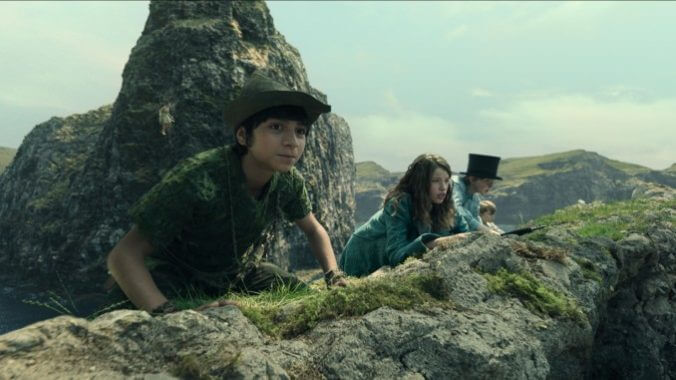It’s Hard to Imagine Why a Child Would Enjoy Peter Pan & Wendy

Disney’s 1953 Peter Pan, an animated adaptation of J.M. Barrie’s play, was one of the films in my rotation growing up. My parents had taped a televised syndication on VHS for me (yes, I’m actually that old), one of many Disney cartoons that they cataloged into tapes in our cabinet for my viewing pleasure. It wasn’t actually one of my favorite Disney classics–I always preferred Alice in Wonderland–but I loved cartoons, and I nevertheless watched it eagerly and frequently enough that when I revisited the film a few months ago, it was, perhaps very clichély, like fully being transported through time.
On the contrary, Peter Pan & Wendy–director David Lowery’s newest iteration of Barrie’s original story, one out of a seemingly endless supply of middling and questionable Peter Pan films—made me feel like I was being transported further into the future. It’s a future where gorgeous and kinetic, hand-drawn animated classics are brought to grim life through a muddy mix of disquieting CGI, lifeless performances and cinematography that would make even the most checked-out cinemagoer desperately yearn for the vibrancy of Disney’s past, all as a means to get paying customers through the con of nostalgia. Oh wait! That’s not the future. That’s right now, in the present. We’re already there, and we’re barreling boldly forward into a gray soup of despair.
Peter Pan & Wendy’s first 20 minutes are nearly identical to that of the animated film. We’re introduced to the lively and imaginative Darling children of Edwardian-era London: eldest Wendy (Ever Anderson), middle child John (Joshua Pickering) and youngest Michael (Jacobi Jupe). The three delight in the tall tales of Peter Pan, the boy who can never grow up, and his adventures in the fantastical world of Neverland. This is much to the dismay of Wendy’s parents, Mary (Molly Parker) and George (Alan Tudyk), who believe their daughter to be much too old now for frivolous children’s stories, especially as she’s to be sent to boarding school the following day. DP Bojan Bazelli veers a hovering camera around the Darling’s home in long takes that attempt to add a sense of animated chaos. Instead, it feels distractingly as if we’re navigating the Darling’s home via drone.
Later that night, Peter Pan (Alexander Molony) arrives with his fairy sidekick Tinkerbell (Yara Shahidi). They’ve come to heed Wendy’s wish to never grow up and bring her and her brothers to Neverland, where they can be children forever. Shahidi’s Tinkerbell is an immediate blight; the uncanny fusion of CGI and live-action that morphs her into a tiny fairy deadens the poor actor. It leaves her appearance and mannerisms not unlike the creepy mo-cap children of Robert Zemeckis’ Polar Express. Long gone is Tinkerbell’s trademark mixture of sass, spite and body-image issues; now, Tinkerbell is faultless, wholesome and kind, immediately taking to her new friend Wendy instead of fighting her for Peter’s attention. I always liked that Tinkerbell was a vindictive little bitch annoyed that her ass was too big–this spoke to me, personally.
-

-

-

-

- Curated Home Page Articles By Test Admin October 21, 2025 | 3:10pm
-

- Curated Home Page Articles By Test Admin October 21, 2025 | 2:57pm
- Urls By Test Admin October 21, 2025 | 2:57pm
- Curated Home Page Articles By Test Admin October 21, 2025 | 2:55pm
-

-

-

-

-

-

-

-

-

-

-

-

-

-

-

-

-

-

-

-

-

-

-

-

-

-

-

-

-

-

-




































